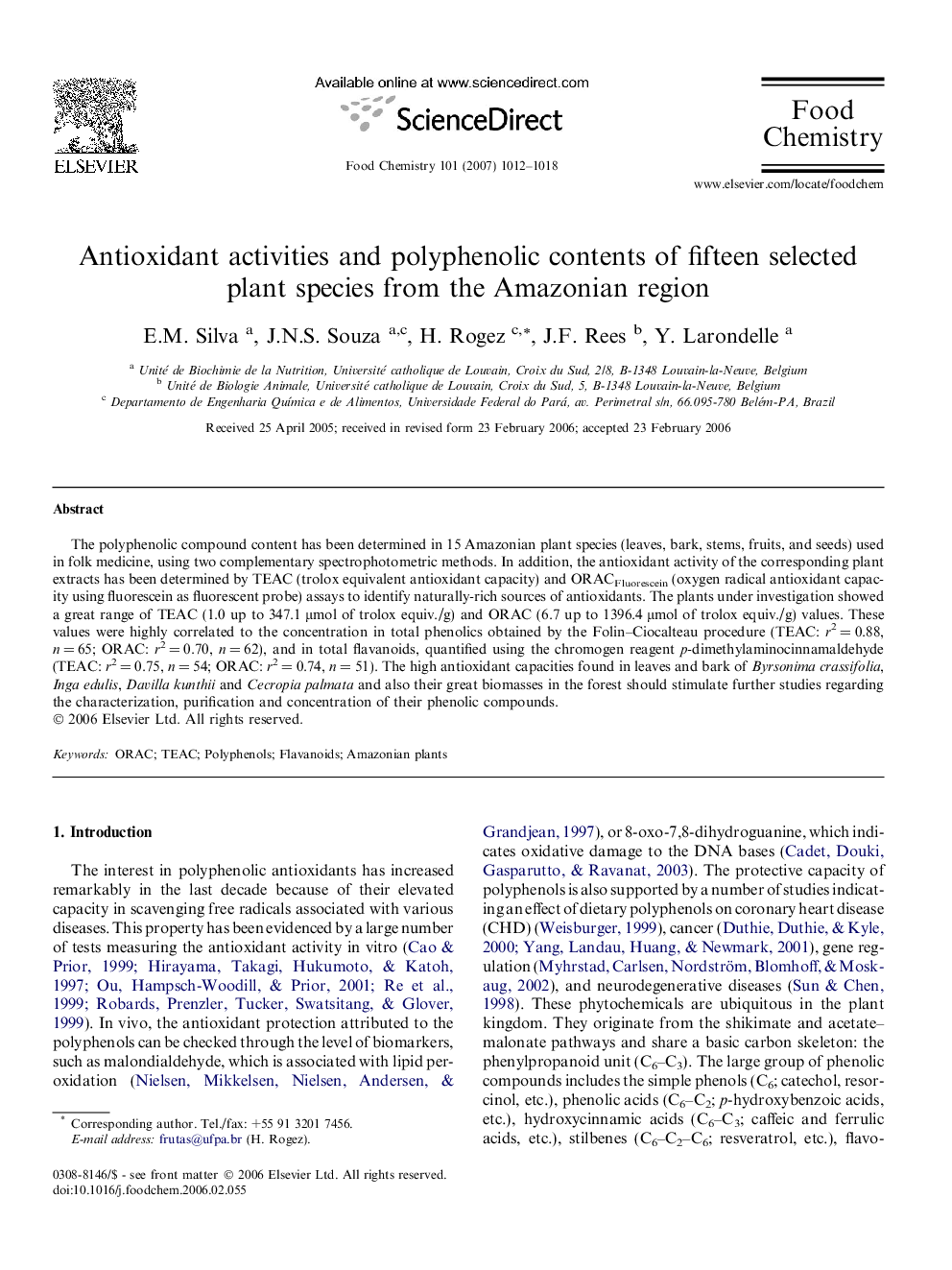| Article ID | Journal | Published Year | Pages | File Type |
|---|---|---|---|---|
| 1191821 | Food Chemistry | 2007 | 7 Pages |
The polyphenolic compound content has been determined in 15 Amazonian plant species (leaves, bark, stems, fruits, and seeds) used in folk medicine, using two complementary spectrophotometric methods. In addition, the antioxidant activity of the corresponding plant extracts has been determined by TEAC (trolox equivalent antioxidant capacity) and ORACFluorescein (oxygen radical antioxidant capacity using fluorescein as fluorescent probe) assays to identify naturally-rich sources of antioxidants. The plants under investigation showed a great range of TEAC (1.0 up to 347.1 μmol of trolox equiv./g) and ORAC (6.7 up to 1396.4 μmol of trolox equiv./g) values. These values were highly correlated to the concentration in total phenolics obtained by the Folin–Ciocalteau procedure (TEAC: r2 = 0.88, n = 65; ORAC: r2 = 0.70, n = 62), and in total flavanoids, quantified using the chromogen reagent p-dimethylaminocinnamaldehyde (TEAC: r2 = 0.75, n = 54; ORAC: r2 = 0.74, n = 51). The high antioxidant capacities found in leaves and bark of Byrsonima crassifolia, Inga edulis, Davilla kunthii and Cecropia palmata and also their great biomasses in the forest should stimulate further studies regarding the characterization, purification and concentration of their phenolic compounds.
